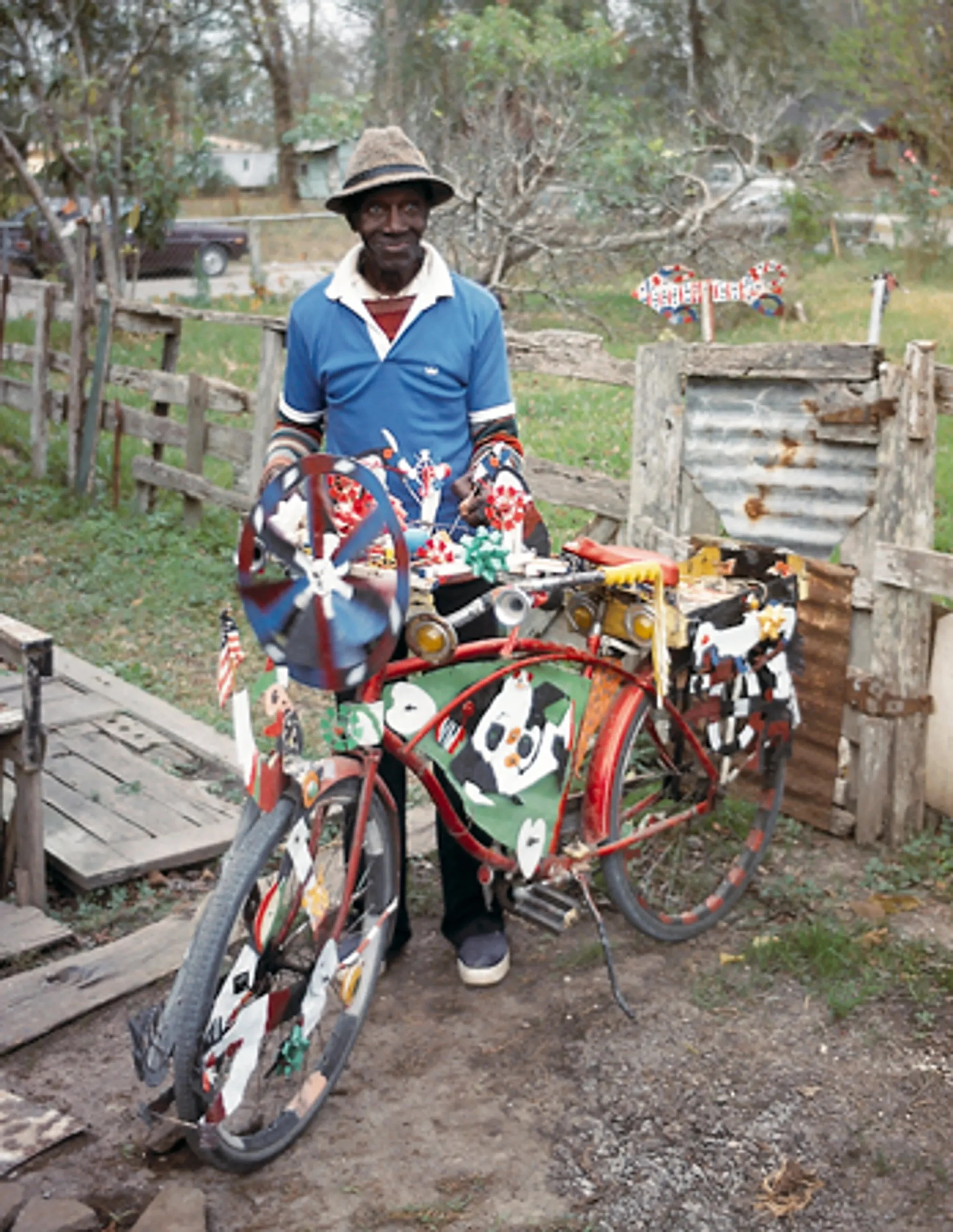
David
Butler
(1898-1997)
untitled
c. 1980
sculpture/assemblage: painted roofing tin and wood
9 x 13 inches (base is 4 inches square)
unsigned
Selected Exhibitions
Two Centuries of Black American Art, Los Angeles Museum of Art, CA, 1976
Black Folk Art in America, 1930-1980, Corcoran Gallery of Art, Washington, DC, 1982
Southern Folk Images: David Butler, Henry Speller, Bill Traylor, University of New Orleans, LA, 1984
Muffled Voices: Folk Artists in Contemporary America, Museum of American Folk Art at the Paine Webber Art Gallery, New York, NY, 1986
Contemporary Art by David Butler, Clementine Hunter, Willie White, Gasperi Folk Art Gallery, New Orleans, LA, 1990
Outside the Main Stream: Folk Art in Our Time, High Museum of Art at Georgia-Pacific Center, Atlanta, 1988
Pictured in My Mind: Contemporary American Self-Taught Art from the collection of Dr. Kurt Gitter and Alice Rae Yelen, Birmingham Museum of Art, AL, 1995
In and Out: Naive, Folk and Self-Taught Artists From the Collection, The Menil Collection, Houston, TX, 1998
By Any Means Necessary: Sculpture by African-American Self-Taught Artists, Cavin-Morris Gallery, New York, NY, 1999
Amazing Grace: Self-Taught Artists from the Mullis Collection, Georgia Museum of Art, University of Georgia, Athens, GA, 2007-08
Self Taught: Seven African American Vernacular Artists, Rebecca Randall Bryan Art Gallery, Coastal Carolina University, Conway, SC, 2007
Souls of Black Folk: The Billy R. Allen Folk Art Collection, Museum of African American Life and Culture, Dallas, TX, 2010
Outliers and American Vanguard Art, National Gallery of Art, Washington, D.C., 2018
We Are Made of Stories: Self-Taught Artists in the Robson Family Collection, Smithsonian American Art Museum, 2022-23)
Photo by Richard Gasperi
“He created sculptures from cut, hammered, and painted roofing tin, bringing to life a vivid array of creatures, some distinctly animal or human, others fantastical or drawn from dreams.”
David Butler yard (site view, c. 1971–1974), Patterson, LA, c. 1968–1985. Photo: John Geldersma
David Butler was born in 1898, the eldest of 8 children in St. Mary Parish, Louisiana. He attended school for one year, but left to help take care of his siblings after his mother’s death. When his siblings were old enough, he moved to Patterson, Louisiana where he worked a series of jobs in manual labor. When an injury at a sawmill, rendered him unable to work, he began making art in earnest - in an effort to brighten his yard up. He began cutting shapes out of discarded sheets of tin sheet using a hammer and chisel, and decorating these creations with house paint. Before long, his yard and home were completely populated with his constructions (critters) and kinetic sculptures (whirligigs).
Butler was raised in a deeply Christian household, but African folklore and traditions remained from the years of slavery in Louisiana. These spiritual elements intermingled with surreal imagery from his dreams in his practice. His sculptures could be seen as talismans against a harsh and unpredictable world.
Butler did receive acclaim in his lifetime, although he wasn’t exactly overjoyed by it. Shy and reserved, he was perturbed by the intrusion of collectors and family members to his sacred space, who dismantled and sold his work.
His work can be found in many collections, including the Smithsonian American Art Museum, Washington, DC; American Folk Art Museum, NY; Philadelphia Museum of Art, PA; New Orleans Museum of Art, LA; and the High Museum of Art.
The John Michael Kohler Arts Center, through the Kohler Foundation, has acquired several key elements from his original yard environment, including screens, sculptures, and a decorated bicycle considered by curators to be among his most significant works

